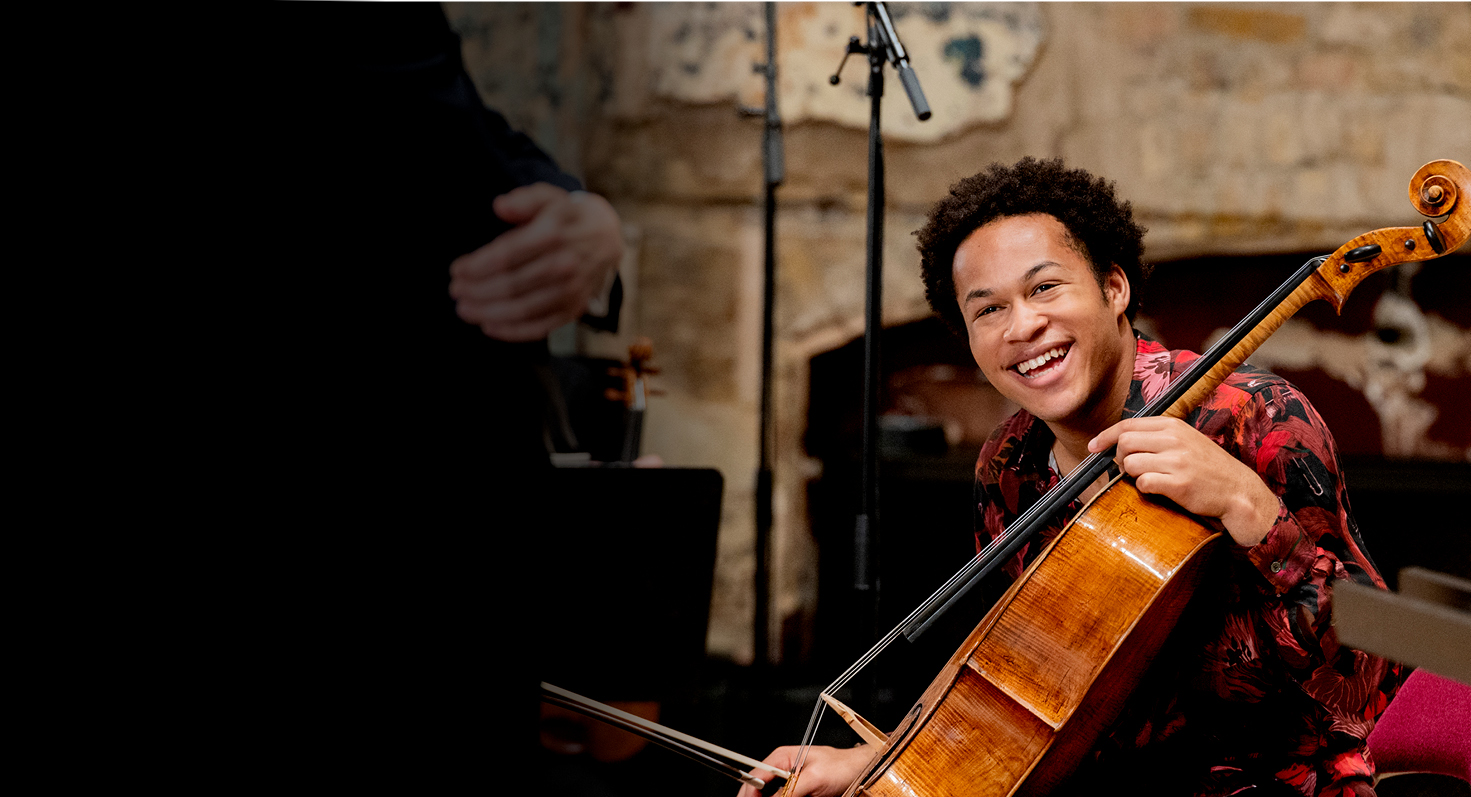The reason the horn is so wrapped up is that it would be very difficult to transport some 17 feet of metal if it was in a straight line. The horn has a conical bore, which means that it starts small at one end and gradually widens. It is not conical throughout the whole instrument; it is cylindrical within the valve section. The mouthpiece comes in different shapes and sizes: different diameters right at the small end and the bore of the mouthpiece and the size and depth of the lip of the mouthpiece can be wider or narrower.
Horn
The Horn, often called the French Horn, is thought by many to be the most beautiful sounding instrument in the orchestra.

The Principal Horn Chair is endowed by John and Carol Wates in memory of Dennis Brain.
The No. 4 Horn Chair is endowed by James Rushton.
Endowment opportunities at the Philharmonia offer supporters unique access and insights to our players. Find out more here:
Introduction
The horn’s mellow sound can turn a simple tune into something that both soothes and lifts the spirit. Horns can also be tremendously powerful and when the whole section plays loudly the sound will break through any orchestral texture.
Before the 20th century most people recognised the horn’s strong relationship with the hunting horns of the past and composers frequently used wrote rustic hunting style music for the horns. However in our modern, urbanised times the horn has lost its rural connotations for us.
Perhaps the most common use of the horn is simply as harmonic filling – somewhere between the bass line and the melody. Horns are perfect for holding long, sustained notes discretely in the background above which melodies can float, around which accompaniments weave and beneath which bass lines wander. This use of the horn is one of the key orchestral techniques that composers learn early on. This is not simply because it’s one of the great ways of tying the orchestra together to create a unified sound, but because it’s very easy to do and sounds fantastic.

Frequency Range
62 – 698 Hz
Tube Length
270 cm
Construction
Did you know?
This complex modern instrument can trace its roots back into prehistory. The earliest instruments were made of animal horn; later, simple wound metal tubes were used as hunting horns.
More about the horn
Join us on Instagram
Keep up to date about online concerts, behind the scenes content and much more

Keep up to date
Sign up for email updates and be the first to receive stories, films and concert announcements

Support the Philharmonia
Enjoyed this content? We need your help to keep these resources free

